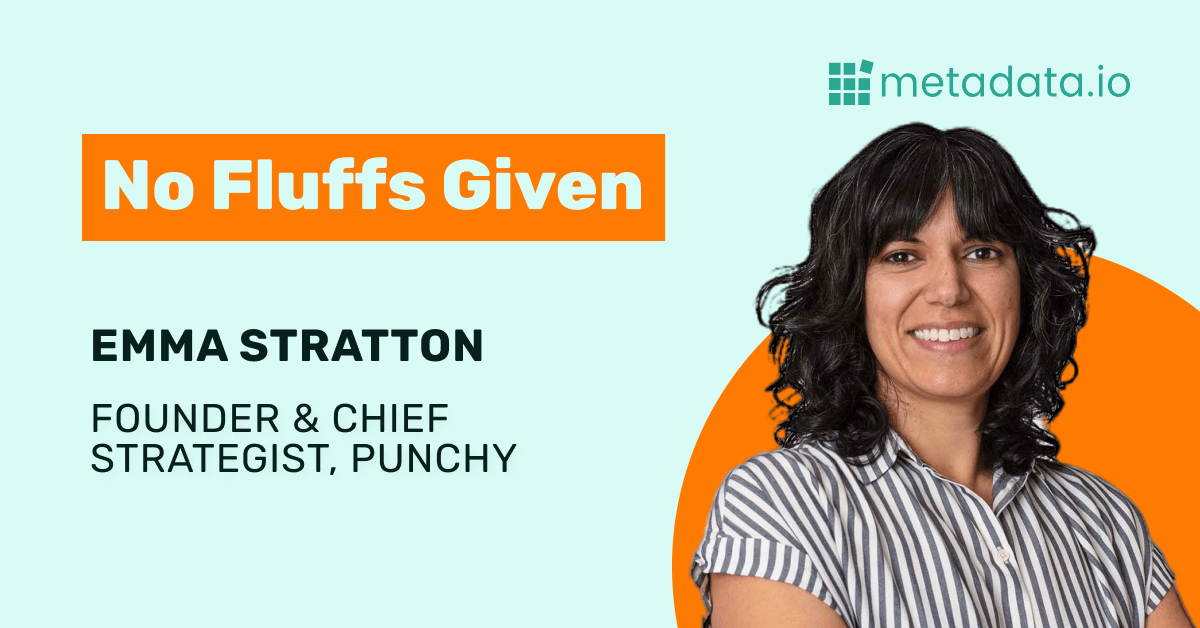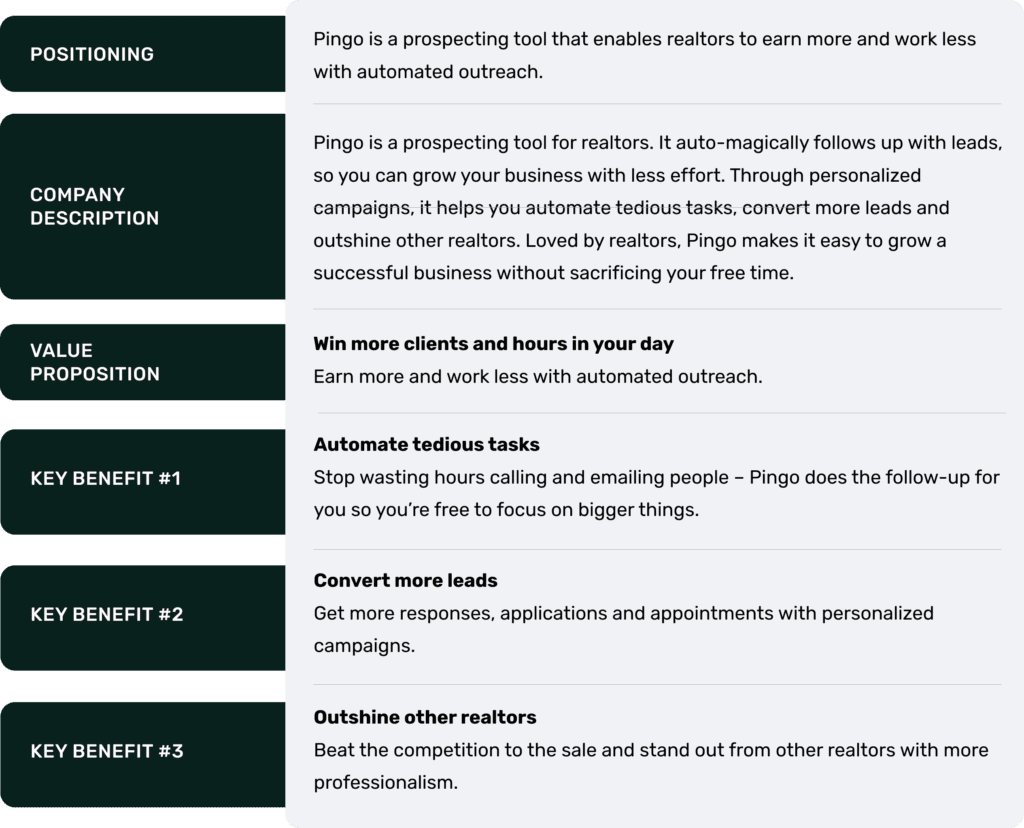Power Your Campaigns With Positioning and Messaging

Table of Contents
This is the third post in our new content series, No Fluffs Given. We’re tired of the fluffy content in our LinkedIn feeds, with no real substance or actionable takeaways. So we’re teaming up with some of the best B2B marketers we know. People who have ACTUALLY done this stuff before. And giving you new, actionable tactics to implement today.
Every millisecond, a digital marketing campaign dies a lonely, insignificant death.
If you close your eyes and listen closely, you can hear the sound of ads, landing pages and call-to-actions fading into obscurity.
Why does poor campaign performance happen to good people, godammit!?
Is it the noise in the market? Using the wrong button color? Is it the product’s fault?!
All of these things can play a role in poor performance. But they’re not the main culprit.
There’s a more powerful, omnipresent force quietly at play.
The reason most campaigns fail is because of a weak (or non-existent 😱) positioning and messaging strategy behind it.
It’s the silent killer of marketing success.

But here’s the good news: if you get your positioning and messaging down, you have a lot less to fear with campaign flops.
Because it’s the surefire way to make your marketing resonate with buyers.
No positioning and messaging? That’s a problem
Positioning and messaging is the strategic foundation of all marketing and sales. It connects the dots between your product and your prospect.
Consider positioning as the strategic lens for all campaign decisions. When you articulate what sets your offering apart and how it solves specific customer problems, your campaigns become more focused and effective, communicating a distinct value proposition to your audience.
Done right, it’s like shining a spotlight on your product that says to your buyers: “TA-DAH! It’s the perfect solution to your problem!”
Done wrong (or not at all), is like throwing Harry Potter’s cloak of invisibility over your product. Your ideal buyer won’t even notice it — let alone see any value in it — in the crowd of other marketing messages.
Weak positioning and messaging is a serious problem. And unlike other marketing problems, you can’t just throw dollars at it to make it go away.
In fact, the more money you pour into campaigns without clear positioning and messaging behind it, the more money (and time and effort and morale) you’re likely to flush down the toilet.
On the flipside, the better your positioning and messaging, the better your marketing.
It makes ads jump out at your prospects with juicy relevance. It helps your product stand out from similar solutions. And it builds a consistent, credible image for your brand over time.
So why doesn’t every company do it?
Maybe it’s because people think tackling positioning and messaging is a massive undertaking that takes a ton of time and effort. And while that can be the case (and you should take all the time you need), it doesn’t have to be.
This article will take you through a punchy little process to nail your strategy before you launch that next campaign.
Put a stake in the ground with your positioning
Ever read a SaaS landing page that left you wondering what the heck the product was…or did? (Me too.)

Positioning makes sure this doesn’t happen. It gives people the right context to get what your product is and why it matters. And it’s incredibly important in over-saturated, competitive markets awash with similar products.
The resident expert on the subject, April Dunford, describes positioning as: “the act of deliberately defining how you are the best at something that a defined market cares a lot about.”
The goal is to put a stake in the ground for what makes your product different — and resolving NOT to try and be everything to everyone. It helps you carve out a unique place in people’s minds for your product.
Your positioning is a statement that clarifies:
- What your product is: eg your category (CRM) or a clear description (automation tool)
- Who it’s for: eg for small businesses, engineers or busy moms
- The value it offers that other solutions don’t: eg simplicity, fun, productivity
To craft a clear positioning statement, you can use this formula:
“Our product is for (ICPs) who are trying to (achieve a specific goal) by (doing things a current way) but (limitation of current way) which leads to (a blocker of progress). With our product, they can (do specific jobs) using (specific features) so that (they can achieve the desired outcome).”
For instance, Metadata.io might position itself as: “Our platform is for B2B marketers who are trying to generate pipeline through digital advertising but are spending too much time managing campaigns, which leads to inefficient ad spend. With our platform, they can automate campaign execution using AI-powered optimization, improving ROI.”
Here are some examples of different positioning statements:
- A simple CRM for small businesses that’s actually fun to use.
- An easy workflow automation tool that helps freelancers scale their business.
- A tech learning platform that enables engineering teams to keep pace with changing technologies.
To capture yours, fill in the blanks of this simple statement:
[Our product] is a [category or descriptor] that helps [target audience] [unique value].
Bring your positioning to life with a messaging strategy
Once you’ve decided on a clear positioning statement, it’s time to bring it to life with a messaging strategy.
A messaging strategy articulates the value of your product in a way that hits home with your ideal customers. It boils down the awesomeness of your product into a simple, focused story that you retell across marketing and sales activities.
Messaging isn’t copywriting.
Messaging clarifies WHAT you’re going to say about your product. And copywriting is HOW you communicate that message across different mediums and channels.
Here’s all you need for a simple messaging strategy to guide your campaigns:
- Positioning statement
- Value proposition
- Key benefits x 3
- Company description
How to write a killer value proposition
Your value proposition is hands-down the most important thing to nail in your messaging strategy. It’s a snappy sentence that sums up the unique value you offer customers.
Think of it as your pinky swear to prospects. Your unbreakable promise.

Your value proposition isn’t a tagline or slogan, like Nike’s “Just Do It” or Zoom’s “Meet Happy.” Taglines are meant to give people a general impression of your brand. A value proposition’s job is to communicate tangible value that your ideal customers really, really care about – which gives them a clear signal to choose you over your competitors.
Your value proposition should be three things:
- Clear so a 4th grader could understand it
- Unique so you stand out from similar solutions
- Specific so the value is concrete and compelling
Value propositions come in all shapes and sizes — there’s no rule about how to write one, as long as it achieves the above.
Remember, your value proposition is part of the core components of your positioning strategy, which should also include:
- Market Category Definition: Choose a category that amplifies your strengths or create a new one if you’re disrupting an existing space.
- Competitive Differentiation: Map out where you stand relative to alternatives, focusing on fundamental differences that impact customer outcomes.
- Value Pillars: Establish key benefits that form the foundation of your value proposition, connecting to your audience’s pain points and goals.
Here are some different examples of effective value propositions:
- Make a free website on your phone in minutes (Milkshake)
- Work on big ideas, without the busywork (Asana)
- Understand how users are really experiencing your site without drowning in numbers (Hotjar)
Your value proposition is closely related to your positioning statement — it should highlight that unique value your product offers that customers well and truly care about.
Crafting clear and compelling benefits
Value prop done, let’s break out some benefits.
Key benefits are the top reasons to choose your product. Together, they expand on the pinky promise you’re making to customers with your value proposition.
Benefits are about outcomes, not features, and do one of two things:
- Solve or neutralize a pain your customer is experiencing, or
- Highlight or reflect a desire your customer has
You might be tempted to write benefits that map neatly to your product’s best features. Try to resist this very natural impulse. Your key benefits should map to what your customer cares about the most.
Start by brainstorming your customer’s most pressing challenges. Choose the 3 most common ones that your product solves, and turn them into benefit statements.
Here are examples of pains turned into benefits:
- Automate soul-sucking tasks
- Know what clients do with your proposals
- Have confidence in your spending decisions
- Book 4x more meetings
For each benefit, craft a short headline and a supporting message to bring the concept to life.
Tying it all together in a company description
Your company description gives a simple overview on what your company does – anyone should be able to read it and grasp what you do.
It should answer the basics – who you are, what you offer and the people you serve – in a clear and concise paragraph. It should include your product category, value proposition, a few key benefits and your target customers.
The secret to kicking the awesomeness up a notch: customers
To create solid positioning and messaging, you have to be crystal clear on what matters to your customers. Otherwise, you’re just guessing.
Interview a few. Listen to sales calls. Mine review sites. Read RFPs you’ve received.
Already have some recent customer research to hand? Go through it again.
All it takes is a willingness to step into the shoes of your customers, and to see things from their
point of view.
What is the ultimate goal they’re trying to achieve? What are their most pressing challenges? How do these challenges make them feel? How did their situation improve after using your product?
Their answers are a goldmine for your strategy. Heck, you can even swipe their exact phrases for your messaging, because customers have a knack for describing complicated stuff in a simple way. And reflecting your customer’s language in messaging also proves that you understand their situation, which naturally builds trust.
Customer insights will give your messaging an edge, so make ‘em part of your process if you can.
Putting everything into a messaging framework
Once you’ve worked through your positioning and messaging, bring it together into a simple framework to guide future marketing activities.
Here is an example of a messaging framework for an imaginary SaaS company, Pingo.

Just a simple framework like this offers a springboard for campaign copywriting.
It clarifies the key messages you need to deliver through your campaign concepts, ensuring the creative is grounded in strategy.
Your value proposition can drive awareness in display ads. You can expand on individual key benefits in social media. Or test different benefit headlines in search.
Positioning and messaging gives you the roadmap to tell a compelling and consistent story across different channels and touchpoints.
And over time, that drives demand.
Supercharge your campaigns
Ultimately, a campaign will only be as successful as the message it delivers.
So why risk failure?
Get clear on the unique value your product offers. Make your ads jump out at prospects with juicy relevance. And build brand equity while picking up leads, too.
That’s the real power of positioning and messaging.
Optimizing Your Messaging Through Testing
Effective B2B messaging requires continuous measurement and refinement to maximize ROI. Track key performance indicators that tie to your campaign objectives, such as engagement rates, click-through rates, and conversion rates, and monitor how these metrics impact pipeline and customer acquisition costs.
Testing Your Messaging
Implement A/B testing across different campaign elements to identify what works. Test variations in:
- Email subject lines and preview text
- Ad copy and headlines
- Landing page messaging
- Call-to-action phrases
- Value proposition statements
For example, test two different value propositions in LinkedIn ads to see which generates higher engagement rates. Track not only immediate metrics but also funnel impact.
Continuous Optimization
Use testing insights for data-driven improvements. Gather sales team feedback on resonant messages, monitor engagement metrics, and adjust underperforming messages. Regularly review your messaging strategy, adapting to evolving market conditions and customer needs.
Link messaging changes to campaign ROI, building a picture of what works best and optimizing accordingly.
Best Practices for Implementation
Maximize the impact of your B2B digital marketing campaigns by understanding your audience and using platform-specific targeting. Run experiments with messaging variations and creative formats, spreading your budget across channels.
Track performance metrics like CPL, CPO, and ROAS to assess effectiveness. Regularly refresh creative assets to prevent ad fatigue. Optimize landing pages for conversions, ensuring alignment with messaging.
Remember to:
- Start with a small pilot program and scale based on results
- Ensure data quality and accuracy in targeting
- Define clear KPIs focused on engagement and revenue impact
- Continuously A/B test different elements
- Integrate tools effectively for a cohesive tech stack
- Map processes before implementation and involve stakeholders early
By following these practices and analyzing performance, you can create effective B2B marketing campaigns that drive measurable results.
Meet Emma Stratton
Founder & Chief Strategist, Punchy
Emma is an expert in messaging and positioning for B2B tech companies. Her customer-first approach helps marketers, founders, and leadership teams translate their company’s visionary technology into simple, compelling storytelling that resonates with audiences. Emma is passionate about new ideas that move the world in the right direction (which is why she founded Punchy). She’s also an award-winning copywriter, runs 7-miles a day, has 3 little kids and loves any kind of cake you’ve got 🙂
Connect with Emma on LinkedIn here.



